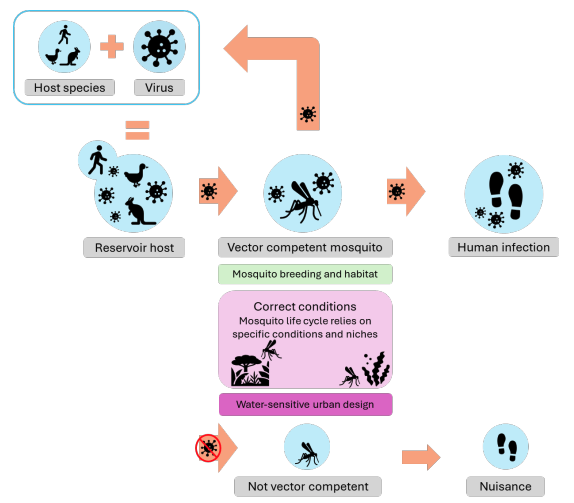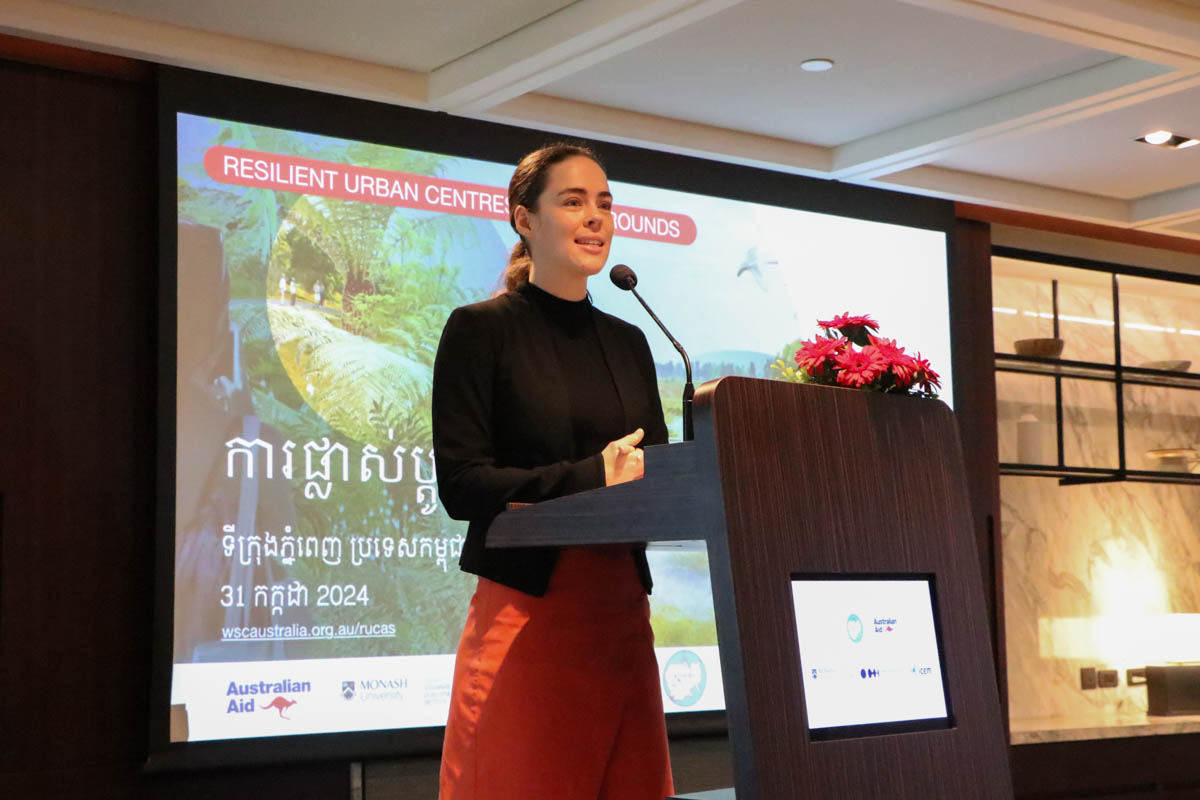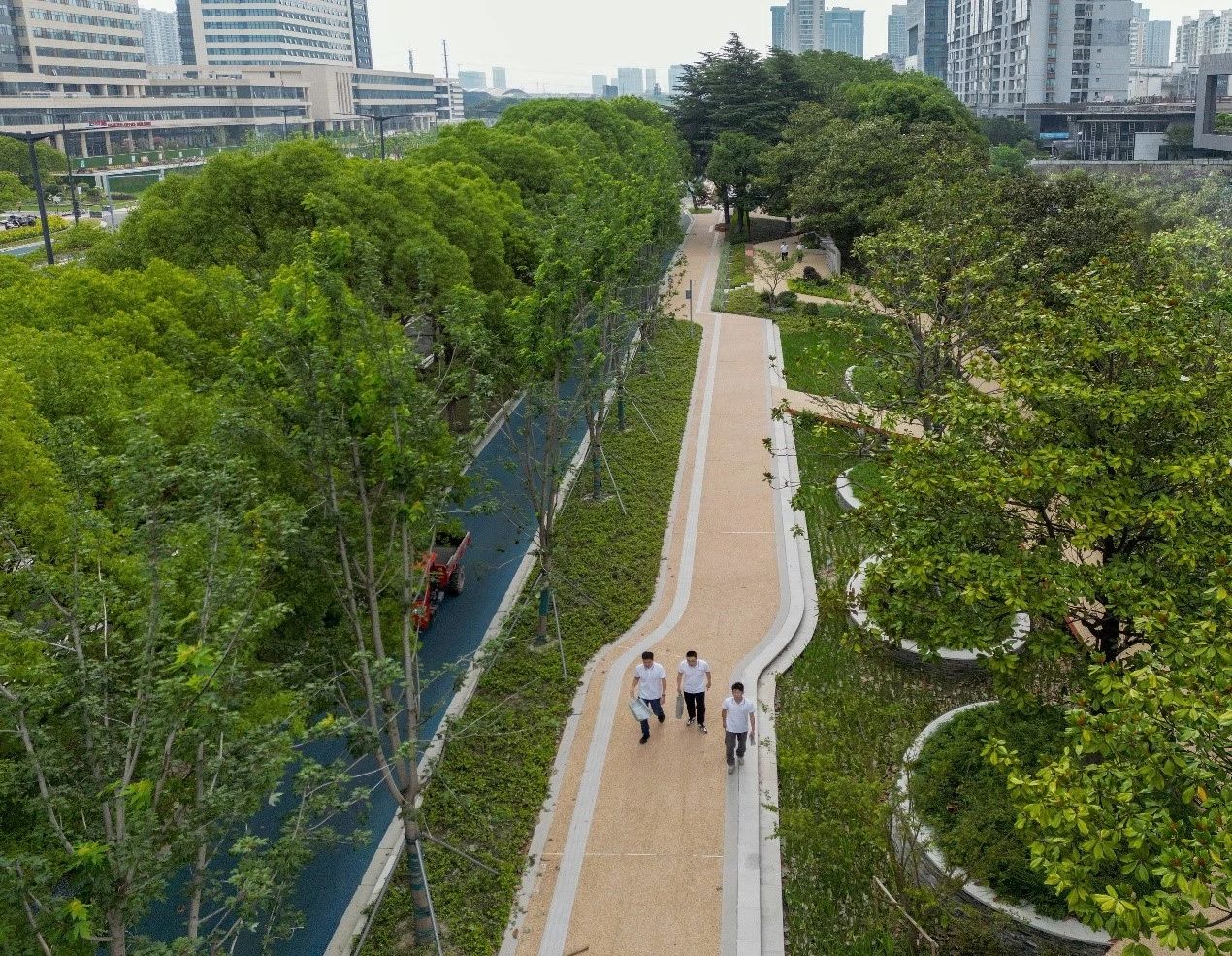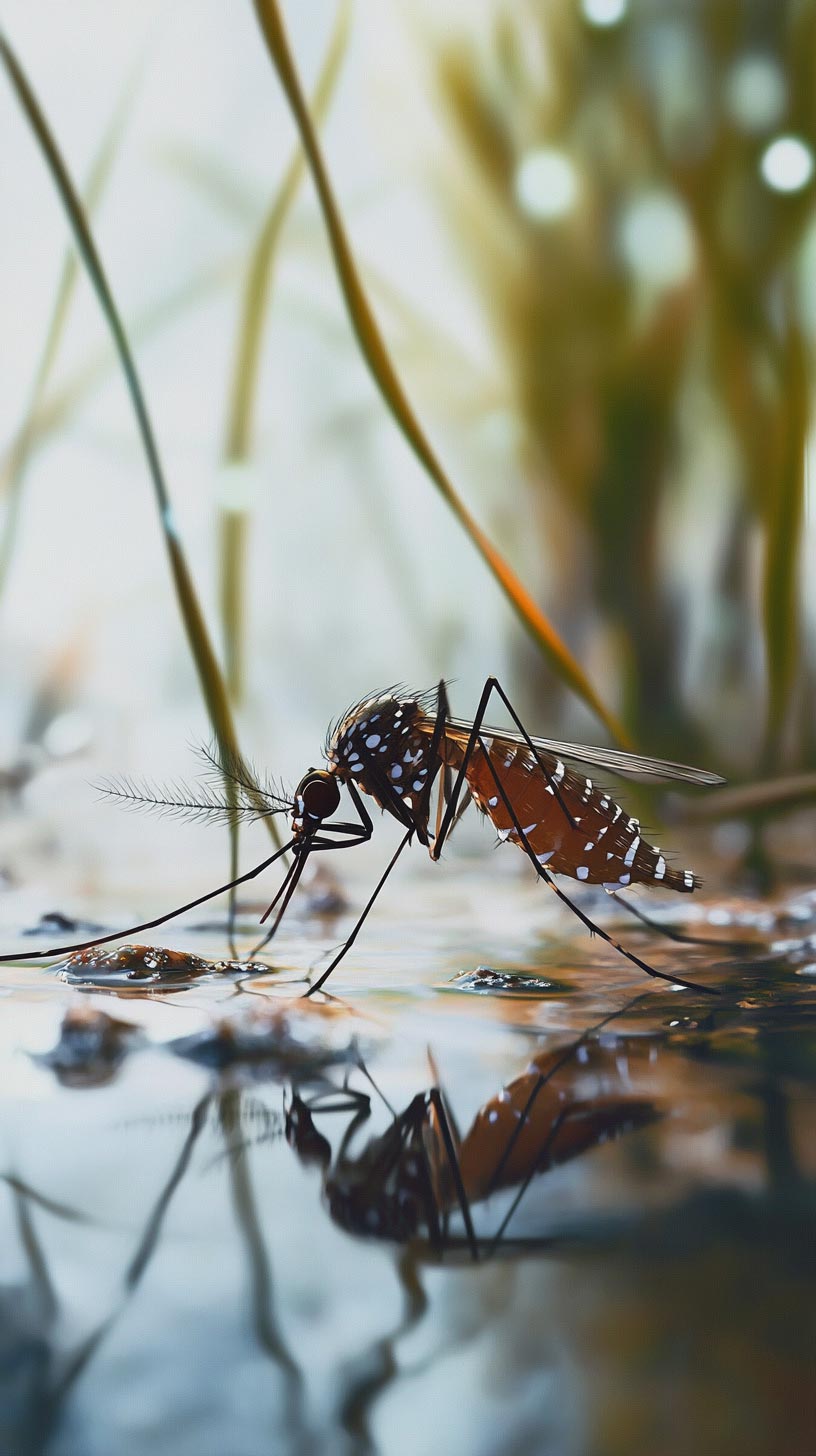This question was the subject of a recent rapid literature review by Alluvium, focusing on Victoria. Better understanding any links between WSUD and mosquitoes means we are better able to manage the risk of mosquito-borne disease.
Transmission of mosquito-borne, resulting in human infection, requires aligning all the components of the disease transmission pathway. To transmit a disease, the mosquito must first bite the reservoir host and collect the virus (left and centre of the diagram). The transmission then requires a human is present in the same environment as the mosquito or within the mosquito’s flight distance, and that the infected mosquito bites and successfully infects the human with the virus (centre and right side of the diagram).

The review considered how WSUD and climate change can influence the prevalence of vector-competent species, presence of host species and the presence of humans in an area. The review found that overall, evidence is limited that WSUD is a priority hazard in transmitting vector-borne diseases. This conclusion does not mean there is no risk; only that there is no evidence to justify a change in WSUD practice, especially when the risk is balanced against the other benefits WSUD can provide (e.g. stormwater management, improved biodiversity and amenity, cooling).
Indeed, the review highlighted 5 areas requiring possible further investigation:
- Understanding the nexus between WSUD in urban areas and exposure to mosquitoes.
- Investigating the risk posed by different WSUD assets.
- Providing evidence to guide constructed wetland design.
- Testing the efficacy of different wetland / WSUD management practices, at various scales.
- Developing monitoring approaches and risk thresholds.




